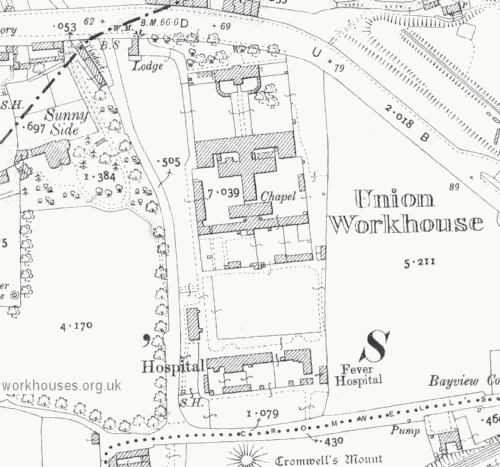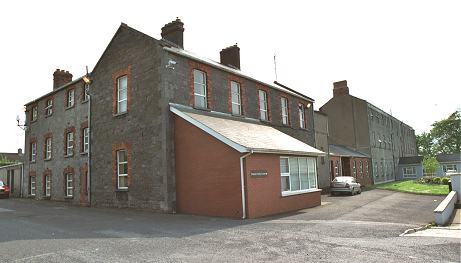Drogheda, Co. Louth
Drogheda Poor Law Union was formally declared on the 1th June 1839 and covered an area of 157 square miles. Its operation was overseen by an elected Board of Guardians, 25 in number, representing its 12 electoral divisions as listed below (figures in brackets indicate numbers of Guardians if more than one):
County of Town of Drogheda:
St Peter's (6).
Co. Meath:
Ardcath (2), Duleck (2), Julianstown (2), Melifont, St Mary's (3), Stamullen (2).
Co. Louth:
Clogher (2), Dysart, Monasterboice, Mullary, Termonfechin (2).
The Board also included 8 ex-officio Guardians, making a total of 33. The population falling within the Union at the 1831 census had been 49,681 with Divisions ranging in size from Melifont (population 1,236) to Drogheda St Peter's (17,042).
The new Drogheda Union workhouse was erected on a 7.5-acre site on Dublin Road, at the south-east of Drogheda. Designed by the Poor Law Commissioners' architect George Wilkinson, the building followed one of his standard design to accommodate 800 inmates. Its construction cost £7,100 plus £1,450 for fittings etc. The site location and layout are shown on the 1912 OS map below.

Drogheda workhouse site, 1912.
The workhouse was declared fit for the reception of paupers on 18th November, 1841, and received its first admissions on 16th December.
During the famine in the mid 1840s, a 50-bed fever hospital was erected at the south of the main building. Sleeping galleries were erected to accommodate an extra 40 inmates, and additional hospital accommodation for 20 patients was provided in a hired building.
Following the creation of the Irish Free State in 1921, the Board of Guardians was abolished and the workhouse was redesignated Dundalk District Hospital, which aslo acted as a County Home.
The main workhouse buildings have now been demolished and a residential care home stands on the site. However, the former fever hospital building survives as part of St Mary's Hospital.

Drogheda former fever hospital building from the north-east, 2002.
© Peter Higginbotham.
Inmates
Records
Note: many repositories impose a closure period of up to 100 years for records identifying individuals. Before travelling a long distance, always check that the records you want to consult will be available.
- Louth County Archives Service, Old Gaol, Ardee Road, Dundalk, County Louth. Holdings include Guardians' minutes (1839-1919); etc.
Bibliography
Links
- None.
Unless otherwise indicated, this page () is copyright Peter Higginbotham. Contents may not be reproduced without permission.


